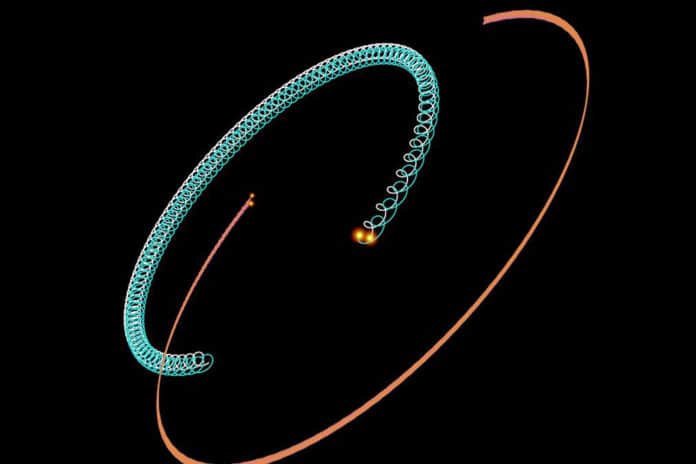In 2017 using the Gaia-ESO Survey, astronomers detected a rare double-binary star system, HD74438 in the Vela constellation. Further observation of this quadruple-star system tracked the orbits of the stars. The observations revealed that this stellar quadruple comprises four gravitationally bound stars. In this system, a short-period binary orbits another short-period binary on a longer orbital period (2+2 configuration).
A new study by astronomers from the University of Canterbury Mt John Observatory in New Zealand has reported the properties of HD74438. They showed that the gravitational effects of the outer binary system are changing the orbits of the inner binary, causing it to become more eccentric.
Advanced simulations of the system’s future evolution show that such gravitational dynamics can lead to one or multiple collisions and merger events. This can produce evolved white dwarfs with masses just below the Chandrasekhar limit. As a result of mass transfer or mergers, these white dwarf stars can produce a thermonuclear supernova explosion.
Associate Professor Karen Pollard of the School of Physical and Chemical Sciences said, “A star like our Sun will end its life as a white dwarf, and the mass of white dwarfs cannot go above the so-called Chandrasekhar limit (about 1.4 times the mass of the Sun). If it does, because of mass transfer or merger events, it can collapse and produce a thermonuclear supernova. Interestingly, 70% to 85% of all thermonuclear supernovae are now suspected to result from the explosion of white dwarfs with sub-Chandrasekhar masses. As a result of mass transfer or mergers, these white dwarf stars can explode as a thermonuclear supernova explosion.”
“The evolution of stellar quadruples such as HD 74438 thus represents a new promising channel to form thermonuclear supernova explosions in the Universe.”
Journal Reference:
- Merle, T., Hamers, A.S., Van Eck, S. et al. A spectroscopic quadruple as a possible progenitor of sub-Chandrasekhar type Ia supernovae. Nat Astron (2022). DOI: 10.1038/s41550-022-01664-5
